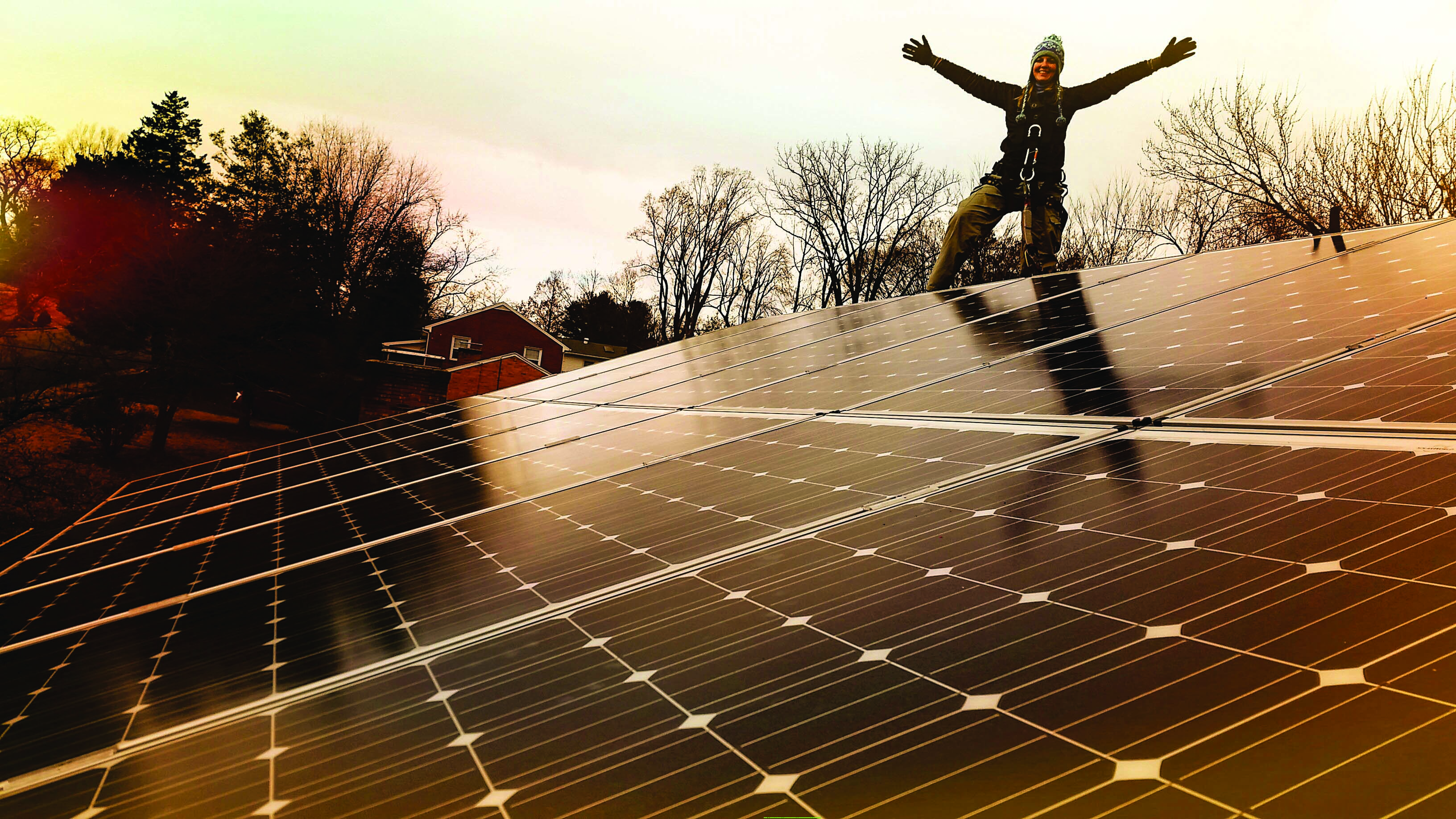“Trump is first and foremost a businessman, and he’ll be hard-pressed to ignore or attack an industry that has created the most jobs in the energy sector in recent years,” says Logan Landry, CEO of Virginia’s largest and fastest growing residential solar power installation company, Sigora Solar.
In fact, according to an early 2017 Department of Energy report, solar puts more Americans to work generating electricity than oil, natural gas and coal combined. Solar industries employ 43 percent of the electric power generation workforce and provide 374,000 jobs. Fossil fuels account for 22 percent of total electric power generation employment and supports 187,117 workers across coal, oil, and natural gas industries.
And with average 2016 solar salaries ranging from $36,000 for entry-level installation positions, to around $57,240 for those with experience, the US Department of Labor indicates these jobs are well-paying and, yes, gainful.
Virginia has never offered state incentives for renewable electricity, yet the Commonwealth has experienced a 3,000 percent growth of non-utility-scale net-metered energy production from solar sources since 2010.
Sigora is a posterchild for this growth. Founded in 2011 by a couple of friends with little more than an old Honda Civic and a 24-foot ladder, in just 6 years the company has expanded to include more than 32 employees, five offices, and $5 million of revenue in 2015. It was recognized by Inc. Magazine as one of the nation’s 500 fastest growing companies.
“Americans are fiercely independent people and have been since the founding of this country. The truth is: they like the choice and freedom that solar offers,” says Landry.
“Solar is booming on the East Coast. What we’re seeing now is reminiscent of the original rise of solar in California,” says Nick Bullinger, chief operations officer for Nashville, Tennessee-headquartered Hecate Energy, which specializes in the installation of utility-scale power plants, including the nation’s largest municipal solar plant in Austin, Texas (140 MW), and a 185-acre 20 MW unit currently under development in Northampton County, Virginia.
Consider Amazon’s recent string of East Coast investments. With an 80 MW unit already installed on the Eastern Shore of Virginia, the online web services giant has pledged to have an additional five solar farms built in the Commonwealth. The new farms will offset electricity usage in Amazon’s northern Virginia data centers and are the result of a long-term policy to power its global infrastructure by means of 100 percent renewable energy. The Virginia facilities make Amazon the largest corporate backer of solar projects east of the Mississippi River.
“It will result in the largest solar facility in the Mid-Atlantic,” boasted Governor Terry McAuliffe.
Another 208-megawatt solar plant is currently under development in North Carolina, and Amazon is nowhere near finished. “We will continue to make progress toward our 100 percent renewable energy goal,” says Amazon vice president of infrastructure Peter DeSantis.
Challenges still remain. Across the nation—and especially in the region—traditional utilities continue to resist investing in solar. Most state legislative bodies have reduced incentives. And the federal government currently provides over $37.5 billion each year in subsidies to fossil fuel industries.
Still, Landry is confident that, as fossil fuel subsidies wane and competition increases, solar will eventually render fossil-fuel energy production unviable. “People want choices. And being literally tied to a single power provider—a traditional utility—doesn’t sit well with most consumers, who are enjoying more and more choice in every other aspect of their lives.”








